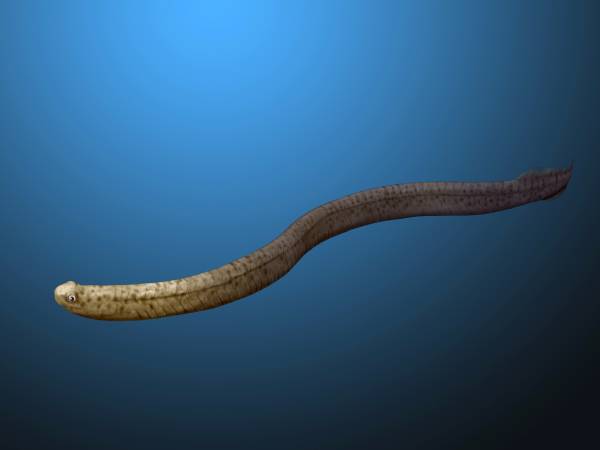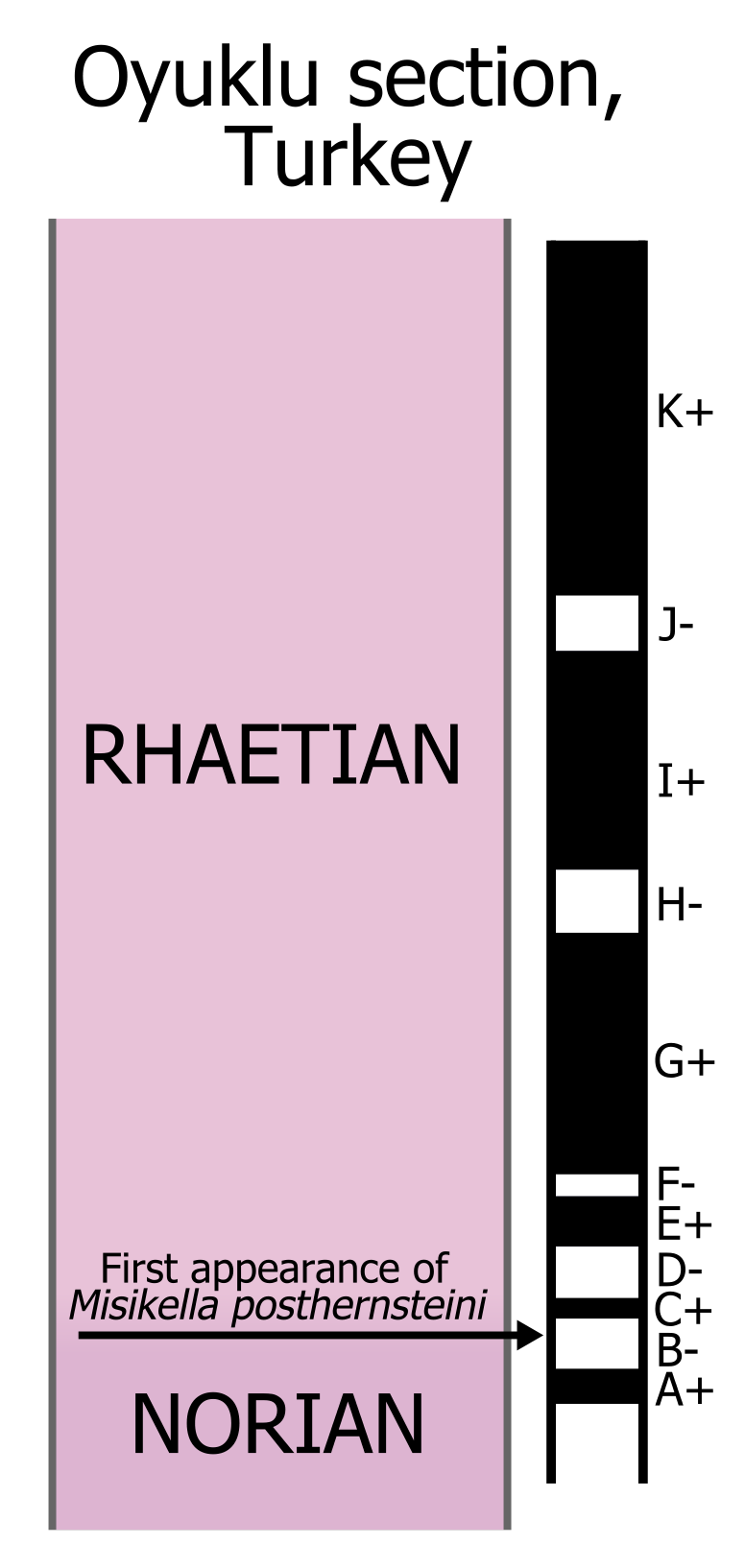|
Heinz Kozur
Heinz Walter Kozur (born 26 March 1942 in Hoyerswerda; died 20 December 2013 in Budapest) was a German paleontologist and stratigrapher. In 1974, with Mock, he described the conodont genus '' Misikella'', in 1975, with Merrill, the genus '' Diplognathodus'', in 1977, the genus '' Vjalovognathus'', in 1988, the genus '' Budurovignathus'', in 1989, the genus ''Mesogondolella'', in 1990, the genera ''Clarkina'' and ''Chiosella'' and in 2003, the genus ''Carnepigondolella''. In 2011, with RE Weems, he made additions to the uppermost Alaunian through Rhaetian (Triassic) conchostracan Clam shrimp are a group of bivalved branchiopod crustaceans that resemble the unrelated bivalved molluscs. They are extant and also known from the fossil record, from at least the Devonian period and perhaps before. They were originally classifi ... zonation of North America.Additions to the uppermost Alaunian through Rhaetian (Triassic) conchostracan zonation of North America: New Mexico Museu ... [...More Info...] [...Related Items...] OR: [Wikipedia] [Google] [Baidu] |
Hoyerswerda
Hoyerswerda () or Wojerecy () is a major district town in the district of Bautzen in the German state of Saxony. It is located in the Sorbian settlement area of Upper Lusatia, a region where some people speak the Sorbian language in addition to German. Hoyerswerda is divided into the Old Town and the New Town, surrounded by village areas. The Old Town is the historical centre with many old houses and sight-seeing attractions, the New Town is more modern and varicoloured. Prior to the renovation of the town, prefabricated apartment blocks predominated in this area. The town has many lakes, marshes and waterways in its surrounding area, because of its situation in Lusatia. This brings many tourists to spend their holidays there. It is attractive for cyclists and inline skaters who use recently created paths meandering among the lakes. Geography The town is situated in the north of the District of Bautzen, close to the borders of Saxony with Brandenburg. Major cities and towns in ... [...More Info...] [...Related Items...] OR: [Wikipedia] [Google] [Baidu] |
1989 In Paleontology
Paleozoology Arthropods Newly named insects Conodont paleozoology German paleontologist and stratigrapher Heinz Walter Kozur (1942-2013) described the conodont genus ''Mesogondolella''. Vertebrate paleozoology Plesiosaurs * Plesiosaur gastroliths documented.Chatterjee and Small (1989). Sanders, Manley, and Carpenter (2001), "Table 12.1" page 167. = New taxa = Archosauromorphs = Newly named pseudosuchians = = Newly named dinosaurs = Data courtesy of George Olshevsky's dinosaur genera list. = Newly named birds = Pterosaurs = New taxa = Synapsids = Non-mammalian = References {{portal, Paleontology * Chatterjee, Sankar and Small, Bryan J.; 1989; New plesiosaurs from the Upper Cretaceous of Antarctica; 47 pp. 197–215 in Origins and Evolution of the Antarctic Biota, Geological Society Special Pub., edited by Crame, J.A. * Sanders F, Manley K, Carpenter K. Gastroliths from the Lower Cretaceous sauropod Cedarosaurus weiskopfae. In: Tank ... [...More Info...] [...Related Items...] OR: [Wikipedia] [Google] [Baidu] |
Stratigraphy
Stratigraphy is a branch of geology concerned with the study of rock (geology), rock layers (Stratum, strata) and layering (stratification). It is primarily used in the study of sedimentary rock, sedimentary and layered volcanic rocks. Stratigraphy has three related subfields: lithostratigraphy (lithologic stratigraphy), biostratigraphy (biologic stratigraphy), and chronostratigraphy (stratigraphy by age). Historical development Catholic priest Nicholas Steno established the theoretical basis for stratigraphy when he introduced the law of superposition, the principle of original horizontality and the principle of lateral continuity in a 1669 work on the fossilization of organic remains in layers of sediment. The first practical large-scale application of stratigraphy was by William Smith (geologist), William Smith in the 1790s and early 19th century. Known as the "Father of English geology", Smith recognized the significance of Stratum, strata or rock layering and the importance ... [...More Info...] [...Related Items...] OR: [Wikipedia] [Google] [Baidu] |
Conodont Specialists
Conodonts (Greek ''kōnos'', "cone", + ''odont'', "tooth") are an extinct group of agnathan (jawless) vertebrates resembling eels, classified in the class Conodonta. For many years, they were known only from their tooth-like oral elements, which are usually found in isolation and are now called conodont elements. Knowledge about soft tissues remains limited. They existed in the world's oceans for over 300 million years, from the Cambrian to the beginning of the Jurassic. Conodont elements are widely used as index fossils, fossils used to define and identify geological periods. The animals are also called Conodontophora (conodont bearers) to avoid ambiguity. Discovery and understanding of conodonts The teeth-like fossils of the conodont were first discovered by Heinz Christian Pander and the results published in Saint Petersburg, Russia, in 1856. The name ''pander'' is commonly used in scientific names of conodonts. It was only in the early 1980s that the first fossil evidence o ... [...More Info...] [...Related Items...] OR: [Wikipedia] [Google] [Baidu] |
German Paleontologists
German(s) may refer to: * Germany (of or related to) **Germania (historical use) * Germans, citizens of Germany, people of German ancestry, or native speakers of the German language ** For citizens of Germany, see also German nationality law **Germanic peoples (Roman times) * German language **any of the Germanic languages * German cuisine, traditional foods of Germany People * German (given name) * German (surname) * Germán, a Spanish name Places * German (parish), Isle of Man * German, Albania, or Gërmej * German, Bulgaria * German, Iran * German, North Macedonia * German, New York, U.S. * Agios Germanos, Greece Other uses * German (mythology), a South Slavic mythological being * Germans (band), a Canadian rock band * "German" (song), a 2019 song by No Money Enterprise * ''The German'', a 2008 short film * "The Germans", an episode of ''Fawlty Towers'' * ''The German'', a nickname for Congolese rebel André Kisase Ngandu See also * Germanic (other) * Germ ... [...More Info...] [...Related Items...] OR: [Wikipedia] [Google] [Baidu] |
Conchostracan
Clam shrimp are a group of bivalved branchiopod crustaceans that resemble the unrelated bivalved molluscs. They are extant and also known from the fossil record, from at least the Devonian period and perhaps before. They were originally classified in the former order Conchostraca, which later proved to be paraphyletic and was subsumed into the superorder Diplostraca. Clam shrimp now make up three of the seven orders in Diplostraca, Cyclestherida, Laevicaudata, and Spinicaudata, in addition to the fossil family Leaiidae. Characteristics Both valves of the shell are held together by a strong closing muscle. The animals react to danger by contracting the muscle, so that the valves close tightly and the crustacean, as if dead, lies motionlessly at the bottom of the pool. In most species the head is dorsoventrally compressed. The sessile compound eyes are close together and located on the forehead; in the genus ''Cyclestheria'' they are truly fused. In front of them is a simple ... [...More Info...] [...Related Items...] OR: [Wikipedia] [Google] [Baidu] |
Rhaetian
The Rhaetian is the latest age of the Triassic Period (in geochronology) or the uppermost stage of the Triassic System (in chronostratigraphy). It was preceded by the Norian and succeeded by the Hettangian (the lowermost stage or earliest age of the Jurassic). The base of the Rhaetian lacks a formal GSSP, though candidate sections include Steinbergkogel in Austria (since 2007) and Pignola-Abriola in Italy (since 2016). The end of the Rhaetian (and the base of the overlying Hettangian Stage) is more well-defined. According to the current ICS (International Commission on Stratigraphy) system, the Rhaetian ended ± 0.2 Ma (million years ago). In 2010, the base of the Rhaetian (i.e. the Norian-Rhaetian boundary) was voted to be defined based on the first appearance of '' Misikella posthernsteini'', a marine conodont. However, there is still much debate over the age of this boundary, as well as the evolution of ''M. posthernsteini''. The most comprehensive source of precise age ... [...More Info...] [...Related Items...] OR: [Wikipedia] [Google] [Baidu] |
Alaunian
The Norian is a division of the Triassic Period. It has the rank of an age (geochronology) or stage (chronostratigraphy). It lasted from ~227 to million years ago. It was preceded by the Carnian and succeeded by the Rhaetian. Stratigraphic definitions The Norian was named after the Noric Alps in Austria. The stage was introduced into scientific literature by Austrian geologist Edmund Mojsisovics von Mojsvar in 1869. The Norian Stage begins at the base of the ammonite biozones of '' Klamathites macrolobatus'' and '' Stikinoceras kerri'', and at the base of the conodont biozones of '' Metapolygnathus communisti'' and '' Metapolygnathus primitius''. A global reference profile for the base (a GSSP) had in 2009 not yet been appointed. The top of the Norian (the base of the Rhaetian) is at the first appearance of ammonite species '' Cochloceras amoenum''. The base of the Rheatian is also close to the first appearance of conodont species '' Misikella spp.'' and '' Epigondolella mo ... [...More Info...] [...Related Items...] OR: [Wikipedia] [Google] [Baidu] |
Carnepigondolella
''Carnepigondolella'' is an extinct genus of conodonts of the Late Triassic The Late Triassic is the third and final epoch (geology), epoch of the Triassic geologic time scale, Period in the geologic time scale, spanning the time between annum, Ma and Ma (million years ago). It is preceded by the Middle Triassic Epoch ... of Italy or Canada. References External links Ozarkodinida genera Late Triassic fish Triassic conodonts Fossils of Canada Fossils of Italy {{conodont-stub ... [...More Info...] [...Related Items...] OR: [Wikipedia] [Google] [Baidu] |
2003 In Paleontology
Plants Conifers Angiosperms Gnetophytes Fungi Arthropods Arachnids Insects Conodont paleozoology German paleontologist and stratigraphy, stratigrapher Heinz Walter Kozur (1942-2013) described the conodont genus ''Carnepigondolella''. Vertebrate paleozoology Parareptiles Non-avian dinosaurs Data courtesy of George Olshevsky's dinosaur genera list. Newly named birds Plesiosaurs Pterosaurs Synapsids Non-mammalian Mammals References {{portal, Paleontology [...More Info...] [...Related Items...] OR: [Wikipedia] [Google] [Baidu] |
Chiosella
''Chiosella'' is an extinct conodont genus. The base of the Anisian stage (also the base of the Middle Triassic series and the top of the Olenekian In the geologic timescale, the Olenekian is an age in the Early Triassic epoch; in chronostratigraphy, it is a stage in the Lower Triassic series. It spans the time between Ma and Ma (million years ago). The Olenekian is sometimes divided i ...) is sometimes laid at the first appearance of ''Chiosella timorensis'' in the stratigraphic record.The elusive origin of Chiosella timorensis (Conodont Triassic). N Goudemand, MJ Orchard, H Bucher andJ Jenks, Geobios, Volume 45, Issue 2, March–April 2012, Pages 199–207, References External links * * Conodont genera Middle Triassic fish Triassic conodonts Anisian life {{conodont-stub ... [...More Info...] [...Related Items...] OR: [Wikipedia] [Google] [Baidu] |
Clarkina
''Clarkina'' is an extinct genus of conodonts. It is considered to be an offshore, outer shelf or basinal, deep-water taxon. The genus name is a tribute to David Leigh Clark. Synonyms ''Clarkina'' Soodan 1975 is a junior synonym for the prehistoric sea cucumber '' Soodanella'' Huddleston 1982 in the family Priscopedatidae. ''Clarkina'' Jordan & Evermann, 1927 is a junior synonym for the cyprinid fish genus ''Mylocheilus'' Agassiz, 1855. Use in stratigraphy The top of the Capitanian (or the base of the Wuchiapingian) is defined as the place in the stratigraphic record where the conodont subspecies ''Clarkina postbitteri postbitteri'' first appears. The top of the Wuchiapingian (or the base of the Changhsingian) is defined as the place in the stratigraphic record where the conodont species ''Clarkina wangi'' first appears. The global reference section is profile D at Meishan Meishan (; Sichuanese Pinyin: Mi2san1; local pronunciation: ; ), formerly known as Meizhou ( ... [...More Info...] [...Related Items...] OR: [Wikipedia] [Google] [Baidu] |




